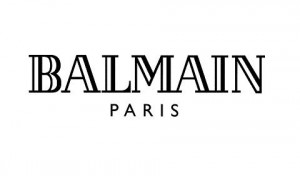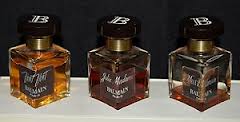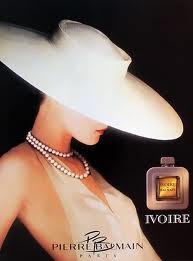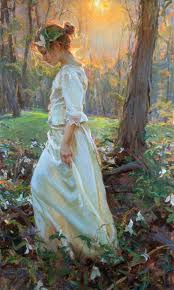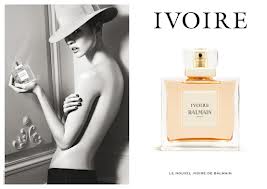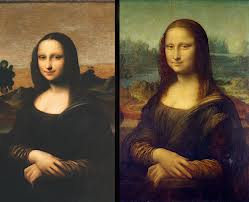BALMAIN Paris is a company that makes extremely high-quality clothing with price tags to match. Their perfumes, however, are extremely affordable and just make you smell like a million dollars. Iconic releases like Ivoire de Balmain (1979), Vent Vert (1947), Jolie Madame (1953) and Miss Balmain (1967) set a high standard. The perfume division of the company, despite having changed hands many times since Pierre Balmain’s death in 1982, has still released high quality juice throughout the remainder of the 20th into the 21st century with things like La Mome (2007), Balman (2004) and Ambre Gris (2010).
Many lovers of vintage perfumes, like me, cringe at the word “reformulation”. It usually means cashing in on a legend for a fraction of the price and results in something pale and ghostly, compared to the original. In the case of Ivoire, it is not so much a ghost as it is a stunning and crisp homage that does justice to the original while stripping away the complexity and texture; but leaving you with the same elegant and posh aura. Judging a perfume from so long ago against one released this year may not seem all that fair, seeing how the standards in the industry have changed drastically. However they chose to call this perfume Ivoire, so a comparison/contrast seemed almost mandatory.
Ivoire de Balmain came out on the cusp of two decades. The “groovy” seventies were dying and the eighties were just getting ready to “boogie”. This perfume, despite all cultural fads and trends at the time, stood above most of the skanky and loud offerings of the day. Inspired, as it was, by a “vision in white” Msr. Balmain saw at the opera; this perfume set out to paint a picture of poise and elegance. It was composed of more notes in its “top” than most perfumes today contain in total. This lead to a very deep and thick scent, dominated by aldehydes (green and airy) and a blend of galbanum and herbs, all while juxtaposing the freshness of citrus with the extremely unique and pungent aroma of asafetida (giant fennel root). Various dry floral notes were also sprinkled in there. The result was something floral and green, earthy and intoxicating that captured the crispness of “white” along with a unique blend of floral notes and spices.
Daniel F. Gerhartz (2003)
Its core was composed of spring like floral notes (jonquils, muguet, neroli and iris) underscored with just enough warm seasoning to accent, rather than overcome, their beauty. Other feminine flowers, like ylang, jasmine and rose, also joined the parade; but only to lend a hint of sensuality lurking behind that polished exterior. In the finish, the original whispered class and dried down to a gorgeous chypre resplendent in oak moss, patchouli, woods and ambery musk. Its development was slow and methodical and it unfolded, over time, to become something just as beautiful as it was when it opened, yet much darker, richer and fuller. This was like a real oil painting on canvas, where you could see the layers of brushstrokes upon one another that drew you into the middle of the picture to focus on the beauty enshrined therein: the “vision in white”.
Ivoire (2012) is composed of significantly fewer “notes” than its predecessor was, yet it somehow manages to get the same feeling across…more simply and with a sharper clarity than the original had. Michel Almairic and Jacques Flori have co-created something altogether magical and reminiscent of the original, and without saying as many words they say almost as much. The original verdant opening is kept alive in the galbanum and citrus of the original with the added lush juiciness of violet leaves lending a novel, more modern feel. Its heart is still floral and slightly cool with iris and all the feminine beauty of rose, jasmine and ylang; although here they are much more restrained. Like young ladies just out of finishing school, these notes come together with innocence but also maintain a maturity, without seeming stuffy or “old fashioned”.
Foregoing the often abrasive (and now restricted) oak moss in the original, the new perfumers added vetiver root for an earthy yet cool greenness alongside soft patchouli, cedar and a sheer vanilla mist. Though I can scarcely believe what my nostrils are telling me, this IS still Ivoire! Where the original drew you in with its complexity and layers upon layers of colors and contrast, the more modern version is more akin to a computer generated image than an actual painting: one that is technically astounding and almost perfect, yet totally created almost entirely with energy rather than something tangible or tactile. As stunning a testament as this is to the original, it is still only a holographic projection in my opinion. It matches the original as far as sheer beauty and composition, yet it lacks the profundity and distinctiveness the original possessed and made its hallmark.
The question that vexes one here is: Is an almost perfect reproduction of a work of classic art (say, The Mona Lisa) any less beautiful than the original was? Can a scanned and rarified image of the original work that has been brightened, corrected and fleshed out by modern means still be called a work of art? Maybe, maybe not. Beauty is in the eye (and nose) of the beholder, so each one will have to decide what is beauty and art to them. The new version of this iconic perfume is still posh, still classy and every bit a classic chypre, by definition. The new one is more of a floral scent that leans towards chypre and the original is a sumptuous chypre that just happens to be floral. The 2012 version was reviewed in EDP concentration and the vintage in EDT. Would anyone really be surprised by the fact that the EDT from 1979 beat the newcomer in terms of sillage and longevity? Perhaps not, but I imagine many more than that will be quite impressed when they sniff and test this “reformulation”. I sure was!!
Disclosure: Reviews based on mini EDP of Ivoire from Balmain Paris and a vintage bottle of Ivoire de Balmain EDT from my collection.
–John Reasinger, Editor

